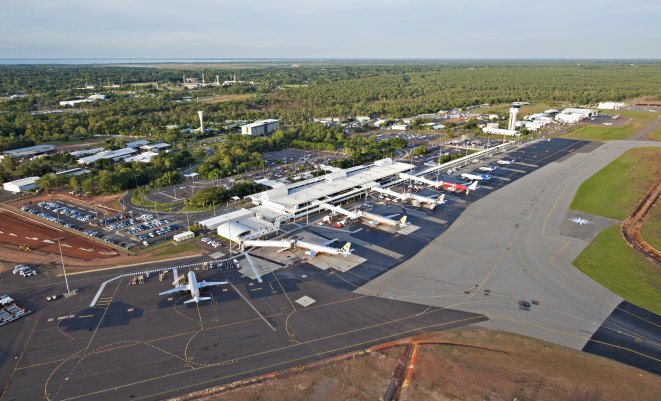
Darwin Airport plans to open a new premium passenger lounge as part of efforts to attract more international flights.
The lounge, named Catalina after the famous flying boats of the 1930s and 1940s, will be operated by the airport and open its doors on September 1. It will also create 10 new jobs at the airport.
“Catalina Lounge was created for the benefit of the airport’s existing airline partners, to attract new international airline carriers and promote tourism in the Northern Territory, with a special focus on Hong Kong, Mainland China and New Zealand,” Darwin Airport owner Northern Territory Airports said in a statement on Monday.
“Proudly partnering with Northern Territory Government and Tourism NT on the project, Darwin International Airport has created a space which will meet the needs of all types of travellers, from business guests through to families.”
Featuring artwork from indigenous artists, the lounge had capacity for 70 passengers, would be full licensed and offer full catering service, a kids’ zone and a VIP area for business travellers.
The lounge would be open for every departing and transiting international flight at Darwin Airport. It will also accept walk-up customers, with entry fees starting at $45.
International airlines at Darwin include Airnorth, Silkair, Malaysia Airlines, Philippine Airlines, Jetstar, Jetstar Asia and Indonesia AirAsia.
Virgin Australia and Qantas have their own premium passenger lounges at Darwin.
Northern Territory Chief Minister Adam Giles unveiled a preview of the new facility on Monday.
The airport posted some photos of the official launch of the lounge on Monday on its Facebook page.
Meanwhile, Darwin Airport said it has turned on its 4 megawatt photovoltaic solar power facility in what it said was the largest airside photovoltaic solar system in the world and Australia’s largest solar installation.
A second stage of the project was also underway, which when completed at the end of 2016 would add a further 1.5MW or power.
“The system is forecast to meet up to 100 per cent of the airport’s peak energy demand in the middle of the day and to generate 25 per cent of the airport’s overall energy needs,” Northern Territory Airports said.
The cost of the entire project was $13 million – funded by private sector investment – and was expected to cut Darwin Airport’s power bill by $1.5 million a year based on current tariff rates.
The solar farm – located at the eastern end of the Runway 11/29 – was on six hectares of airport land not needed for aviation activities and had an expected life span of 25 years.


















